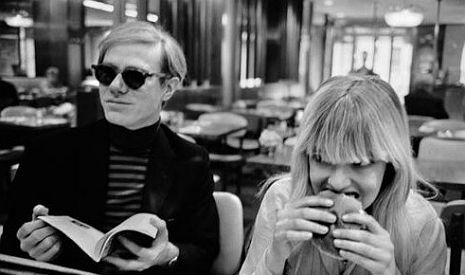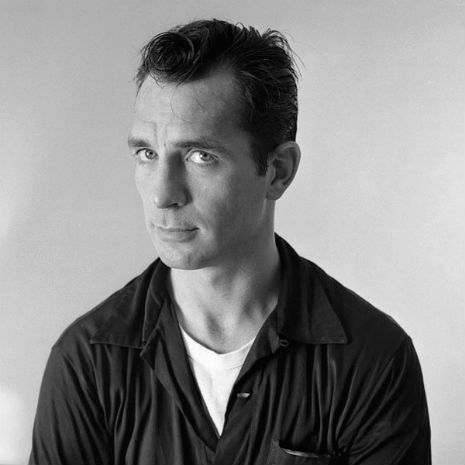
Bibbe and friend
Love him or hate him, Beck Hansen’s family tree is jaw-droppingly cool. Not only was his maternal grandfather Fluxus artist Al Hansen, his grandmother was actress and poet Audrey Ostlin Hansen, and his mother Bibbe Hansen was, among her many incarnations, one of Warhol’s youngest Factory “Superstars” as well as an artist, actress, and musician in her own right.
Not long before she appeared in Warhol’s 1965 films Prison and Restaurant at the age of thirteen, Bibbe was in a short-lived girl pop group with Jack Kerouac’s only child, Jan Kerouac, called The Whippets.
Bibbe and Jan were twelve years-old in 1964 when they formed The Whippets in New York City with their friend Charlotte Rosenthal, using Whippet as their collective surname. The group formed when they met songwriter Neil Levinson one day while trying to panhandle for bus fare. The Whippets made one recording for Laurie Records, the Beatle-themed novelty single “I Want To Talk To You,” written by Levinson with the B-side “Go Go Go With Ringo,” written by Beatles zealot DJ Murray the K’s mother, Jean Kauffman. The song sold well enough in Canada to reach the pop charts. Any prospects of an ongoing music career were cut short soon after the recording session when Bibbe found herself in a state juvenile detention center.
Bibbe told Scram magazine the story of the group’s formation and brief life in 2005:
Charlotte Rosenthal, Janet Kerouac and I were all downtown street kids in 1964 New York City. While panhandling, we three met songwriter Neil Levinson (“Oh, Denise”) and hustled busfare from him. On the bus ride we fell to chatting. The Beatles had just come out big in the US and Neil had written a girl-song response to “I Want To Hold Your Hand.” Would we be interested in hearing it? We met him later that day at Steinway Studios on 57th Street and together finished the lyrics and music for “I Want To Talk With You.” It was a classic girl group riff and we dug it. That same day we went to a half dozen record companies auditioning the song without any takers. As a last resort, Neil called Colpix label’s Don Rubin from a payphone. When Don said he would see us we ran all the way over to the audition. We sang the song and within the next couple days we were signed to Colpix and to DuLev Productions. DuLev was Levinson’s company with his partner, Steve Duboff. For the B-side Neil brought in pal Jean Murray (Jean Kauffman) who had co-written the Darin hit “Splish Splash” with Darin and her son, DJ Murray the K. Oh, that she only wrote us another “Splish Splash!” Instead it was the rather silly and insipid “Go Go Go With Ringo.” We loved the A-side but weren’t too wild about the Ringo song. Over the next few weeks we rehearsed daily, shopped for matching outfits and had 8x10 glossy promo pictures taken. At one point we were introduced to the group The Tokens who apparently were now 1/3 owners of our act along with Dulev (1/3) and Jean Murray (1/3). Our percentage was apparently not accounted for under this bookkeeping arrangement. Similarly, I have no idea how Don Rubin and Colpix were supposed to get their cut.
Within a few weeks we were recording. The record was pressed—at least dj copies. We got a box of these records to split between us. I believe it was released however briefly but nothing much happened with it. I heard our masters were sold to Laurie Records at one point. Later I heard we’d charted somewhere in Canada. Shortly before she died, Janet Kerouac told me her Rhino Records lawyers were looking into that and had found that we were owed a little bit of money. Apparently not enough to bother collecting from what I can tell.
The Whippets, “I Want To Talk To You,” 1964:






